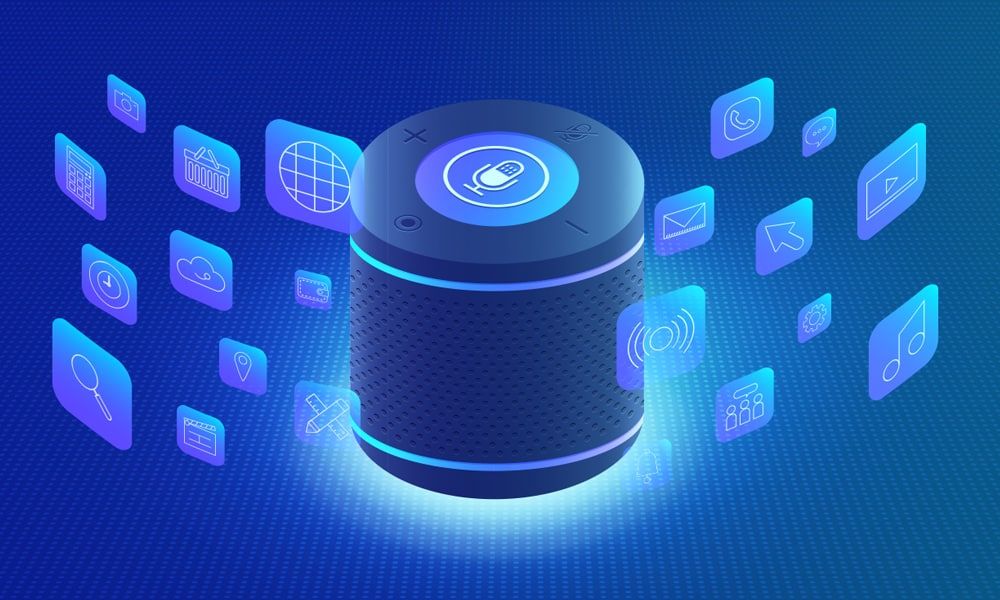

In recent years, voice assistants have become an integral part of our daily lives, revolutionizing the way we interact with technology. As these AI-powered helpers continue to evolve, we’re witnessing a rapid transformation in their capabilities and potential applications. Let’s learn more about this topic below with 2048 Unblocked. From smart homes to personal productivity, voice assistants are poised to reshape our digital experiences in ways we’ve only begun to imagine.
Voice assistants have come a long way since their inception. What started as simple voice recognition software has now evolved into sophisticated AI-powered systems capable of understanding context, learning from user interactions, and even anticipating needs. The journey from basic command execution to natural language processing and machine learning has been nothing short of remarkable.
In the early days, voice assistants were limited to performing basic tasks like setting alarms or making phone calls. Today, they can engage in complex conversations, answer follow-up questions, and even understand emotional nuances in human speech. This evolution has been driven by advancements in natural language processing, machine learning algorithms, and the integration of vast knowledge databases.
Major players like Amazon’s Alexa, Google Assistant, Apple’s Siri, and Microsoft’s Cortana have been at the forefront of this revolution. Each iteration brings new features and improved accuracy, making these assistants more useful and intuitive. The competition among tech giants has accelerated innovation, pushing the boundaries of what’s possible in voice-activated technology.
One of the most significant developments has been the ability of voice assistants to learn and adapt to individual users. By analyzing patterns in speech, preferences, and usage habits, these AI systems can provide personalized experiences tailored to each user’s needs. This level of customization has made voice assistants more than just tools; they’ve become digital companions that understand and anticipate our unique requirements.
Today’s voice assistants are far more capable than their predecessors. They can control smart home devices, provide real-time information, assist with shopping, and even help with complex tasks like scheduling appointments or managing finances. The integration of voice assistants into various devices and platforms has expanded their reach and utility.
Smart speakers have become the primary interface for many voice assistants, serving as hubs for smart home control and information access. However, the technology has expanded beyond standalone devices. Voice assistants are now built into smartphones, cars, TVs, and even household appliances, creating a seamless ecosystem of voice-controlled devices.
The ability to understand context and maintain conversational continuity has been a game-changer. Modern voice assistants can engage in multi-turn conversations, remembering previous queries and using that information to provide more accurate and relevant responses. This natural interaction style has made voice assistants more approachable and useful for a wider range of users.
Another significant advancement has been the integration of voice assistants with third-party services and applications. Through APIs and partnerships, voice assistants can now tap into a vast ecosystem of services, allowing users to do everything from ordering food to booking travel arrangements using just their voice.
The rise of edge computing has also played a crucial role in enhancing voice assistant capabilities. By processing data locally on devices, rather than relying solely on cloud-based servers, voice assistants can now operate faster and more reliably, even in areas with poor internet connectivity.
As we look to the future, several exciting trends are emerging in the world of voice assistants. These innovations promise to make our digital helpers even smarter, more intuitive, and more deeply integrated into our daily lives.
Read more: How to Use AI Tools for Graphic Design and Art
One of the most anticipated developments is the potential for voice assistants to achieve something closer to Artificial General Intelligence (AGI). While current AI systems are specialized for specific tasks, AGI would enable voice assistants to understand and learn any intellectual task that a human can. This could lead to voice assistants that can engage in more complex problem-solving, creative tasks, and even emotional support.
Advancements in natural language processing will allow voice assistants to understand and respond to human speech with near-human levels of comprehension. This includes better understanding of context, sarcasm, and emotional subtleties in speech. The goal is to make interactions with voice assistants feel as natural and effortless as talking to another person.
Future voice assistants are likely to incorporate multiple modes of interaction beyond just voice. This could include visual recognition, gesture control, and even haptic feedback. Imagine a voice assistant that can see and interpret your environment, respond to hand gestures, and provide tactile feedback through smart devices.
Enhanced sensory capabilities will also play a crucial role. Voice assistants may be equipped with advanced sensors to detect environmental factors, user emotions, and even health indicators. This could lead to proactive assistance based on real-time data about the user’s physical and emotional state.
The next generation of voice assistants will take personalization to new heights. By leveraging more sophisticated AI algorithms and access to broader datasets, these assistants will be able to tailor their responses and actions to individual users with unprecedented accuracy. This could include adapting their personality, speech patterns, and even sense of humor to match the user’s preferences.
Contextual awareness will also see significant improvements. Future voice assistants will be able to understand and respond to the user’s current situation, location, and surroundings. This could lead to more relevant and timely assistance, such as automatically adjusting smart home settings based on the user’s activities or providing location-specific recommendations without explicit prompts.
Voice assistants are set to become central hubs for controlling and interacting with a wide array of emerging technologies. This includes deeper integration with Internet of Things (IoT) devices, augmented reality (AR) and virtual reality (VR) systems, and even brain-computer interfaces.
In the realm of IoT, voice assistants will play a crucial role in managing increasingly complex smart home ecosystems. They will serve as the primary interface for controlling everything from lighting and climate control to security systems and entertainment devices.
The convergence of voice assistants with AR and VR technologies could lead to immersive experiences where users can interact with virtual environments and information overlays using voice commands. This has potential applications in fields ranging from education and training to entertainment and productivity.
As voice assistants become more advanced and integrated into our lives, ethical considerations and privacy concerns will take center stage. The development of responsible AI practices will be crucial to ensure that these technologies are used in ways that benefit society while protecting individual rights and privacy.
Data privacy will be a key focus, with increased emphasis on secure data handling, transparent privacy policies, and user control over personal information. There will likely be ongoing debates and regulatory efforts to address concerns about data collection, storage, and usage by voice assistant providers.
The potential for bias in AI systems will also need to be addressed. As voice assistants become more influential in our decision-making processes, ensuring fairness and eliminating discriminatory outcomes will be critical. This may involve developing more diverse training datasets and implementing rigorous testing protocols to identify and mitigate biases.
Another ethical consideration is the impact of voice assistants on human relationships and social interactions. As these AI companions become more sophisticated, there’s a need to consider how they might affect human-to-human communication and emotional connections.
Read more: Top AI Trends That Will Dominate the Next Decade
The advancement of voice assistant technology is set to transform various industries, opening up new possibilities and changing the way we work and live.
In healthcare, voice assistants could play a crucial role in patient care and medical research. They might assist in diagnosing conditions, monitoring patient health, and even providing mental health support. Voice-activated systems could also help healthcare professionals access and update medical records more efficiently.
The education sector stands to benefit greatly from advanced voice assistants. These AI tutors could provide personalized learning experiences, answering students’ questions, explaining complex concepts, and adapting teaching methods to individual learning styles.
In the business world, voice assistants are poised to revolutionize productivity and customer service. They could handle scheduling, data analysis, and even participate in meetings as virtual assistants. In customer-facing roles, advanced voice AI could provide more natural and efficient customer support experiences.
The automotive industry is already integrating voice assistants into vehicles, and this trend is likely to accelerate. Future cars may feature highly advanced voice-controlled systems that can handle navigation, vehicle diagnostics, and even driving assistance.
In the realm of accessibility, voice assistants have the potential to greatly improve the lives of people with disabilities. More sophisticated voice-controlled systems could provide enhanced independence and interaction capabilities for individuals with visual, motor, or cognitive impairments.
While the future of voice assistant technology is bright, it’s not without challenges. Technical hurdles such as improving accuracy in noisy environments, handling complex queries, and maintaining consistent performance across different accents and languages still need to be overcome.
There’s also the challenge of creating voice assistants that can truly understand and respond to human emotions. While progress has been made in emotion recognition, developing AI that can empathize and respond appropriately to human feelings remains a complex task.